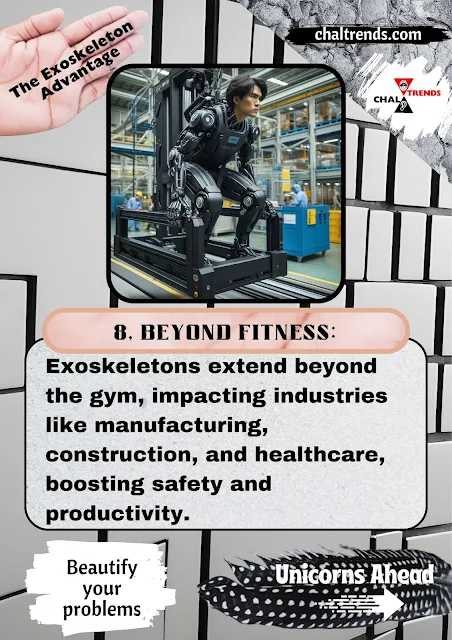Introduction:
The future of fitness is here, and it involves wearable exoskeletons – robotic suits that are transforming the way we move and exercise. Once relegated to science fiction, exoskeletons are rapidly becoming a reality, promising to revolutionize the fitness landscape. Here are 8 mind-blowing facts about these incredible devices:
1. Superhuman Strength:
Exoskeletons can amplify your strength by several times, allowing you to lift heavier weights, perform more repetitions, and achieve results previously thought impossible. Imagine effortlessly squatting hundreds of pounds or performing pull-ups with ease.
2. Reduced Risk of Injury:
By providing structural support and distributing weight more evenly, exoskeletons can significantly reduce the risk of muscle strain, joint injuries, and back pain often associated with intense workouts.
3. Enhanced Endurance:
Exoskeletons can lessen muscle fatigue, allowing you to train longer and harder without experiencing the same level of exhaustion. This translates to increased stamina and improved overall fitness levels.
4. Faster Rehabilitation:
Exoskeletons are proving invaluable in physical therapy, helping individuals with injuries or disabilities regain strength and mobility at an accelerated pace.
5. Accessibility for All:
Exoskeletons have the potential to make fitness more accessible to people with physical limitations, allowing them to participate in activities they might have previously considered impossible.
6. Personalized Workouts:
Advanced exoskeletons can be programmed to provide customized levels of assistance, tailoring workouts to individual needs and fitness goals.
7. Data-Driven Training:
Many exoskeletons are equipped with sensors that track performance metrics like strength output, range of motion, and muscle activity, providing valuable data for optimizing your training regimen.
8. Beyond Fitness:
The applications of exoskeletons extend far beyond the gym. These devices are being explored in various industries, from manufacturing and construction to military and healthcare, offering the potential to significantly improve worker safety and productivity.
Conclusion
As wearable exoskeleton technology continues to evolve, the possibilities for human performance enhancement are truly mind-boggling. The future of fitness is one where we can push our physical limits further than ever before, with the help of these robotic companions. So, get ready to embrace the future – the age of the superhuman athlete might be closer than you think.











.jpeg)





0 Comments